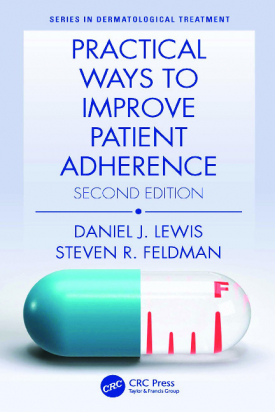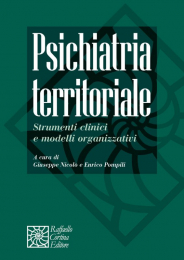Non ci sono recensioni
DA SCONTARE
The New York Times has called adherence the world’s "other drug problem." Physicians prescribe medications, but patients do not always use them. While it would be easy for physicians to blame patients for treatment failures, physicians can do more to motivate patients to use their medications as recommended.
Practical Ways to Improve Patient Adherence, Second Edition, is an excellent resource for physicians and allied health professionals whose patients exhibit poor adherence. Daniel J. Lewis, MD (Department of Dermatology, University of Pennsylvania Health System), and experienced adherence researcher, Steven R. Feldman, MD, PhD (Departments of Dermatology and Social Sciences & Health Policy, Wake Forest University School of Medicine), examine the problem of poor adherence and offer concrete techniques to encourage patients to use their medications and improve treatment outcomes.
This book offers novel, potent ways to get patients to use their medications and improve treatment outcomes – tools healthcare providers can use day in and day out. A medical education is not complete without a thorough understanding of the hurdles that contribute to poor adherence and what health professionals can and should do about it.
"20 years of patient adherence research presented in a simple, fun, and easy-to-read style … a once-in-a-lifetime treat!"
Warren H. Chan, MD, MS, Dermatologist"East to digest and remarkably practical for physicians. … Recommend it to all my friends in medicine!"
Diego R. Dasilva, MD, Dermatologist
Named the winner of the 2022 “Best Overall” Dermie Award by the Dermasphere podcast.
Published in association with the Journal of Dermatological Treatment.
Chapter 1: Introduction
Section 1: The Problem of Poor Patient Adherence
Chapter 2: How Poor is Patient Adherence? Chapter 3: Qualitative Measures of Adherence. Chapter 4: Clinical Studies on Adherence. Chapter 5: Why Is Adherence So Poor? It is Our Fault. Chapter 6: A Pyramid Model for Improving Adherence.
Section 2: Foundation – Trust and Accountability
Chapter 7: Establishing the Physician-Patient Relationship. Chapter 8: Setting the Right Office Visit Context. Chapter 9: Fostering Patient Accountability.
Section 3: Practicality – Simplicity and Education
Chapter 10: Involving Patients in the Choice of Treatment. Chapter 11: Reducing the Burden of Treatment. Chapter 12: Educating and Providing Instructions. Chapter 13: Helping Patients Remember.
Section 4: Psychology – Behavioral Techniques
Chapter 14: Anchoring. Chapter 15: Giving Salient Descriptions. Chapter 16: Emphasizing Losses Versus Gains. Chapter 17: Framing Risks of Side Effects. Chapter 18: Using Side Effects to Our Advantage .
Section 5: Special Considerations
Chapter 19: Patients with Psychiatric Conditions. Chapter 20: Pediatric Patients. Chapter 21: Suddenly Adherent Patients. Chapter 22: The Most Adherence-Resistant Patients
Section 6: Sample Cases
Chapter 23: Pediatric Atopic Dermatitis. Chapter 24: Skin Cap for Psoriasis. Chapter 25: Coral Reef Psoriasis. Chapter 26: Scalp Psoriasis.
Section 7: Final Thoughts
Chapter 27: Poor Adherence Is Not All Bad. Chapter 28: Conclusions.
References




